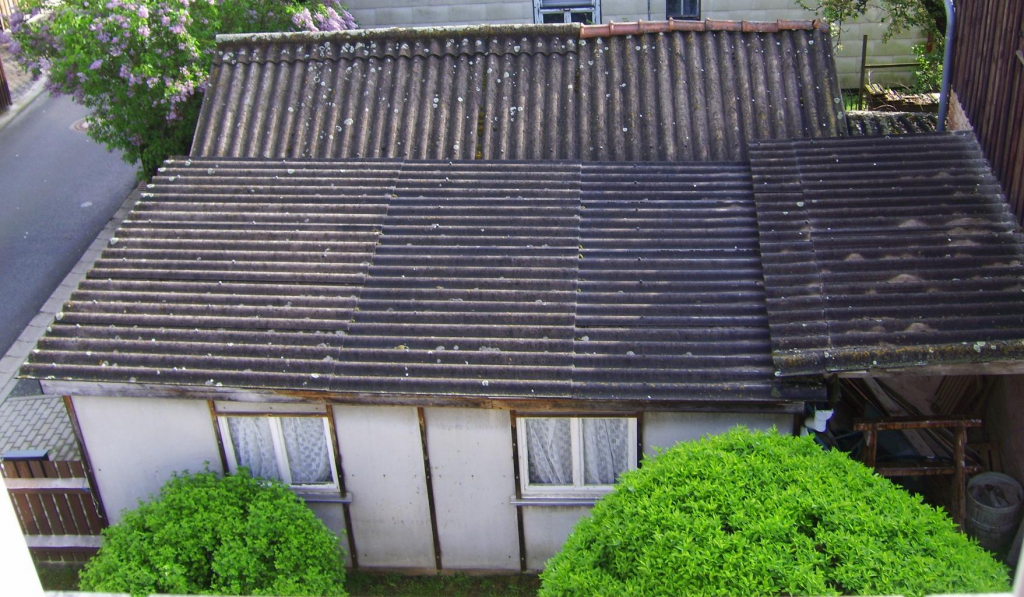Building Materials Meaning Within the Novel
Building materials are resources that are used for construction. Their importance in the novel, Texaco by Patrick Chamoiseau, comes from their use in constructing hutches. Hutches were homes for those like Marie Sophie, who never truly had a home. They were a part of their owners, and the way they were constructed usually correlated directly with who lived within them. Building materials are also used in the novel as a metaphor. When slavery was originally abolished, we saw that hutches tended to be made out of crate wood. It was not as appealing or strong as other materials, but it was easily accessible, and it symbolizes the enslaved persons’ newfound freedom. However, when they became more accustomed to the free life, they started to add nicer things to their hutches, such as asbestos. They were becoming more settled in, so just like their lives, their hutches were becoming more stable. Then finally, we see the novel end with concrete which is a metaphor for the foundation they set in Texaco and within their new lives.
The Doctor of Hutches
Primarily, the readers learn of building materials when it talks about constructing hutches, and nobody was better at constructing hutches than Esternome Laborieux. He would even be referred to in the book as the “Doctor of Hutches” (Chamoiseau 132). Esternome would use many different building materials to build these hutches, in his and Ninon’s new home on the hill; “His first hutch was made of bamboo. Bamboo partitions. Bamboo roof. Braids of coconut straw to stop the waters” (Chamoiseau 133). In the real world construction industry, straw can also be used as thermal insulation for roofs, while also working as filling for wood framed buildings which is what Esternome used it for on his hutch (Spišáková and Mačková 130). After seeing how well constructed Esternome’s hutch was, “all blackmen that moved up into the hills called on Esternome, Doctor of Hutches, for help” (Chamoiseau 133-134).
Wood
The primary building material that Esternome used to build these hutches was wood from all different kinds of trees. He even discovered that different wood had different benefits and uses. Bitterwood kept away termites. Poles for the hutches were made out of woods like West Indian cashew or simaruba (Chamoiseau 133-134). It just so happens that wood is the second oldest material used by humans for construction, just behind stone. Its certain properties such as its availability, machinability, strength, and its reusability is what makes it so usable to humans (Spišáková and Mačková 130).

Along with getting wood from trees, many of the characters in the novel would use wooden crates as a building material for their hutches. Wooden shipping crates were easily accessible in Texaco for Marie-Sophie and her fellow Texaco residents. Presumably, the crates would have come from imports into Martinique from either France or other countries that traded with the island. What made crate wood so good for construction was that crates came in many different sizes, so the residents had different dimensions of wood to work with. Also, crate wood is treated before use where a portion of the water it contains is removed. This allows the wood to support a heavier load by increasing its strength properties, avoids gaps between boards, and also makes it lighter (Harvey 34).
Asbestos
Although wood was the primary building material used throughout the novel, it was not the most sought after. The material that many people wanted was asbestos. Asbestos has been crucial for many nations’ industrial growth, especially in countries that are in the process of developing with a lack of financial resources. The things that make asbestos so appealing is its durability, versatility, its cost, and its unrefined technology requirements. What attracted people like Marie-Sophie was the fact that some forms of asbestos were fire retardant (Hernández-Blanquisett et al). Many hutches were the complete opposite and would easily catch fire. There was even one instance where thirty hutches were destroyed after a fire in Morne Abélard due to the main building material being wood (Chamoiseau 285). Even though asbestos was heavily sought, it was not commonly found. So many residents would use the asbestos for the facade of their

homes. Part of the reason why they would put it on the front of their homes is due to the fact that people did look at asbestos with such a high regard. Even Marie-Sophie’s first hutch contained “a roof made of tin sheets…, side partitions made of crate wood, and in front the extraordinary asbestos” (Chamoiseau 300). In the real world, outside of this fictional novel, there was also a high regard for asbestos. However, this all changed in the 1950s when the British informed the world of the relationship between the manipulation of asbestos and respiratory cancer diseases. Since then, many nations have either banned asbestos or developed strict laws regarding their use (Hernández-Blanquisett et al).
Works Cited
Chamoiseau, Patrick. Texaco. Trans. Rose-Myriam Rejouis and Val Vinokurov. NY: Vintage, 1997.
Harvey, J. D. “Wooden packaging: An important role in export operations.” International Trade Forum,
vol. 23, no. 4, 1987, pp. 10-13,34.
Hernández-Blanquisett A, Álvarez-Londoño A, Martínez-Ávila MC, Covo-Camacho S, Quintero-Carreño V.
“Asbestos and Cancer in Latin America and the Caribbean: We May have won Some Battles, but
Definitely not the War.” Journal of Public Health Research, vol. 11, no. 2, 2022.
Spišáková, Marcela, and Daniela Mačková. “The Use Potential of Traditional Building Materials
for the Realization of Structures by Modern Methods of Construction.” SSP – Journal of civil
Engineering, vol. 10, no. 2, 2015, pp. 127-138.
Editorial Collective
Evan Rossell, Samuel Ledesma, Sarah Mueller, Emily Rosenthal

